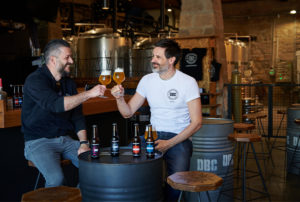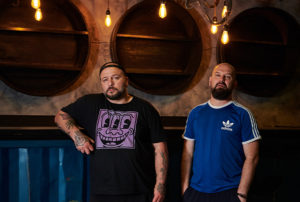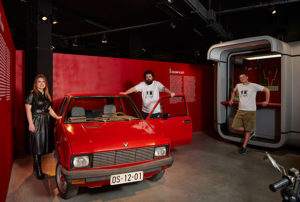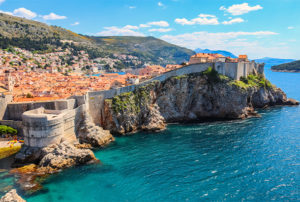Every year since 1950, the Dubrovnik Summer Festival has taken over the fortifications of the city’s Old Town, showcasing alfresco performances of mainstream theater, classical music, and opera in the balmy Adriatic air from July 10 to August 25. A prestigious philharmonic plays, and Shakespeare is often performed atop Fort Lovrijenac.
The audiences at these performances have reflected the changing eras in this former city-state, a medieval rival to Venice. In the package-tourism days of the 1970s, bemused foreigners would attempt to decipher Renaissance Dalmatian drama. By 2010, with independent Croatia the new Med hot spot, visiting Hollywood celebs could be spotted among the spectators while their yachts bobbed offshore. And, starting in 2011, crowds ballooned thanks to Game of Thrones, which inspired endless film location tours in Dubrovnik’s historic center—that’s King’s Landing, to fans of the show.
In 2021, this dynamic is set to shift again—for reasons beyond the reawakening from pandemic shutdowns. While the Dubrovnik Summer Festival plays on, the inaugural Summer in Gruž kicks into gear, just two miles north. For three months, from June 15 to September 15, a more diverse cultural program, including film screenings and rock concerts, will provide an alternative to the established high-brow entertainment.
Both the City of Dubrovnik and the Dubrovnik Tourist Board, keen to find a new focus for visitors’ attention, are involved. The driving force, however, is Gruž itself. A youthful grassroots movement is transforming the neighborhood, a port and former industrial center, into a breeding ground for creativity. A cluster of new businesses and artistic initiatives built around an old factory complex—and, in most cases, built by the bare hands of the local creatives themselves—is helping diversify and contemporize a centuries-old city that can feel overrun by tourists. On top of that, in recent years Croatia has faced an emigration crisis, with an estimated average of 50,000 mainly young Croatians leaving each year. Gruž provides a sort of template for locals who want to stay, and want to do so for the right reasons.
“This is the kind of place we’ve always wanted,” says Marko Milenkovic, one of the neighborhood’s pioneers and the co-owner of the nightclub Love Bar. “And we wanted to keep it old school.”

Gruž has always had its own identity. For centuries, it was a separate town from Dubrovnik, a summer retreat for the wealthy, some of whose mansions still line the harbor. By the 1800s, however, it had become the city’s industrial locus and de facto entrance. (Even today, all of Dubrovnik’s cruise ships, ferries, and buses arrive at the main port in Gruž.) Outside of being a transit hub, the most notable attraction for the neighborhood for many years has been its open-air produce and fish market, where locals and high-end chefs alike shop. (The most exciting restaurant in Gruž, Urban & Veggie, run by vegetarian triathlete Ivo Dadic, sources much of its plant-based menu from the market.)
Not far from the market is the factory at the center of Gruž’s revitalization. Tvornica Ugljenografitnih Proizvoda—known, thankfully, as TUP—was bought by a thousand or so of its employees after the Croatian War of Independence in the 1990s. (Bullet holes still mark the facades and windows.) These days, that workforce has aged and dwindled to a few dozen who make machine parts for car engines and the city trams in the country’s capital, Zagreb. As production has wound down, more and more real estate has become available in and around the factory, which spans about 150 yards near Gruž harbor—and those units are being reimagined. So far, half a dozen private operations, from music studios to a museum, have set up shop, with more, including a ceramics atelier, in the works.
The first of these hip new businesses to launch around TUP was the Dubrovnik Beer Company, in 2017. A century ago, salt from the island of Pag would have been delivered across the calm waters of the harbor to the warehouse where, on this spring day, Željko Erak and his business partner, Dario Ševelj, clink glasses. Now, hops and barley come in from the U.S., the U.K., and Germany, and the beer that’s brewed on-site goes out to some 40 bars and restaurants across Dubrovnik and around southern Dalmatia.

“When we saw this location, we couldn’t believe our luck,” Erak says, gesturing around the high walls of the former warehouse. “All this space! We knew about the rise of craft beer up north in Zagreb, but no one had been brave enough to try it here in Dubrovnik. People actually thought we were crazy!”
Mornings at DBC are given over to brewing. By midafternoon, the bar begins filling with regular customers and a growing number of tourists. Outside, overturned oil barrels become makeshift tables, augmented in summer by a barbecue and, new this year, a beer garden.
Inside, meanwhile, Erak and Ševelj stage live events all year. “We’ve had a rapper from Split, a jazz act from Philadelphia, and some strange slam poet from Zagreb,” Erak says. “You name it, we’ve had it.”
A brewery wouldn’t have been possible in Dubrovnik’s historic center, which has a main street that’s barely 300 yards long. While the abundance of space at TUP is its main attraction, there’s no room for professional jealousy among the venues. In fact, after their shift, Erak and Ševelj often walk over to the Love Bar, found up a slight incline and deeper inside the factory complex.
A different kettle of fish entirely, the Love Bar makes use of its vantage point, gazing over the Gruž waterfront. Created by a trio of 30-somethings—Marko Milenkovic, a veteran of underground Dubrovnik nightlife; Amanda Sherry Milenkovic, his American-born wife; and Doris Kosovic, his oldest friend from elementary school and the lead singer for the acclaimed Croatian rock band Silente—the Love Bar comprises two convivial spaces. A bar area decorated with hearts, stars, and Instagram-friendly phrases (“It all comes rushing back”) satisfies the overflow from a lounge area, where a makeshift stage is set up in the corner for local bands to pump out lively sets. It’s loud and smoky, and if it all gets to be too much, there’s an outside deck that offers twinkling sea and an unblemished sky.
With great music and quality cocktails at knockout prices—“You’ve no idea how many Aperol spritzes we shift at $3.75,” Milenkovic says—the Love Bar triumvirate has attracted a large, loyal, and mainly local customer base. On nights when Kosovic’s band takes the mic, it’s standing room only.
This year, another club joined the fray: Dubina, opened by prominent Croatian disc jockeys DJ Torres (Tomislav Rugole) and DJ FunkYou (Hrvoje Bubalo). “We know each other from way back,” Torres says, explaining that they met at the Belvedere Hotel, an abandoned resort just outside Dubrovnik that hosted some of the city’s most memorable left-field dance parties in the early 2000s. “What that experience gave us, we now want to give back.”

Dubina’s future founders were among the local spinners who headed off to various international clubs in search of fame. Years later, they happened to find themselves simultaneously back in their hometown. “We decided that it was high time,” Torres says. “We drove around Dubrovnik looking for the right location for our kind of club. When we walked into TUP, we looked at each other and said, ‘Perfect!’”
Dubina (which means depth) is buried in the heart of the factory, with a design that’s aptly industrial, including a bar counter fashioned from a hunk of sawn-off shipping container. It’s a metaphor for the direction of Dubrovnik itself: Gruž, the point of arrival for so many visitors, has become the departure point for a budding generation of locals headed elsewhere to try to make a living. The young entrepreneurs at TUP offer an alternative path, even as they acknowledge it may not be an ultra-lucrative one.
“We know we’re not going to make a fortune,” Torres admits. “If we wanted to make a lot of money, we could have done something else. This is a different kind of investment.”
A similar investment has been made on the other side of the plant, at the Red History Museum. An interactive examination of Croatia’s 45 years under communism, the museum is divided into three areas: Socialism in Theory, Practice, and Memory. Its founders are brothers Krešo and Nino Glavinic and designer Kristina Miroševic, three locals, all in their early 30s, who put their own money into the project.

“At first, we wanted to create a Dubrovnik festival of film history,” says Krešo Glavinic, who has a background in film and served as an assistant location manager on Game of Thrones when the crew was in Dubrovnik. “Then we hit upon the idea of a museum.” Glavinic sold his boat to fund a stay with Miroševic in Zagreb, where they trawled flea markets and secondhand shops for retro treasures, such as a communist-era Bible and a film poster designed by Picasso. “It took us two years, building everything from scratch. Once we got this space at TUP, we knew we were home.”
The result is enlightening and entertaining, bringing history to life by taking the visitor through a typical Croatian kitchen, living room, and bedroom, pre-1989. The exhibits look at daily life during this time, displaying Yugo-era pop records, soft drinks, and TV commercials. One corner is given over to the local obsession with the U.S. soap opera Dynasty. “The one thing from the West that communism couldn’t erase,” Glavinic says with a laugh.
At the same time, the era’s darker side—the censorship and secret agents—lurks behind the bedroom wardrobe. Pull back the curtain here to listen to interviews of a camp commander and a former inmate at Yugoslavia’s gulag, Goli Otok. (An English translation is available with an augmented reality feature that can be downloaded onto your phone.) “Other museums in Croatia deal with certain aspects of this era, but none put it in its wider context,” Glavinic says. “It’s as if the whole postwar period has been airbrushed out of history. Older locals [tell us they] cannot thank us enough.”
During the pandemic, the museum created a new multifunctional area for exhibitions and events and an outdoor courtyard for films and live music. Alongside, a bar now offers authentic retro Yugo drinks, such as the Coke-like Cockta and Fanta-inspired Pipi. These spaces, as well as the Dubrovnik Beer Company and the Love Bar, will be key venues for Summer in Gruž, showing locals and visitors alike a new side to the city.
Like so much else in Gruž, it all feels communal and inclusive, nostalgic but also forward-looking. By way of example, Glavinic points out one of the museum’s prized possessions, the Yugo car used by Bruce Willis in Die Hard with a Vengeance. Beaming, he gives it a pat. “We feel like we’re leading the way to a new Dubrovnik.”
A Perfect Day in Dubrovnik
When you’re done seeing trendy Gruž, take in a few of the classic attractions in old Dubrovnik, which is justifiably known as the Pearl of the Adriatic.

See
Start your trip by walking along the 13th-century walls of Dubrovnik; yes, you can imagine yourself patrolling King’s Landing’s fortifications at the Battle of Blackwater Bay, but don’t forget to marvel at the real-life terra-cotta rooftops and limestone streets of Old Town, the UNESCO World Heritage Site. And for even more views, especially at sunset, catch a cable car to the top of Mount Srd.
Do
Learn about the city’s rich past with a visit to the Cultural History Museum (located in the 15th-century Rector’s Palace), where you can peruse art and period furniture. Then, soak up Dubrovnik’s legacy as a naval power at the Maritime Museum. Looking for a little relaxation on the seas? Hop a 15-minute ferry to Lokrum, which is home not only to beautiful beaches but also to 19th century botanical gardens and a Benedictine monastery.
Eat
For fusion cuisine, the Mediterranean-Asian mash-up Azur Dubrovnik impresses with dishes such as seafood laksa. To go all out with an artful tasting menu and amazing views, the choice has to be the Michelin-starred 360.
Stay
Just a five-minute walk from the fortress walls stands the sleek, inviting Hotel Excelsior Dubrovnik. Set in a 1913 villa, this five-star celebrity favorite has hosted big names ranging from Queen Elizabeth II to Elizabeth Taylor.
Catch Ya in Croatia: Starting July 8, United will offer nonstop service between the U.S. and Croatia, with flights departing from Newark/New York. Book your adventure at united.com/dubrovnik.
Next Up: Could Balkan Food Be America’s Next Hot Restaurant Trend?
